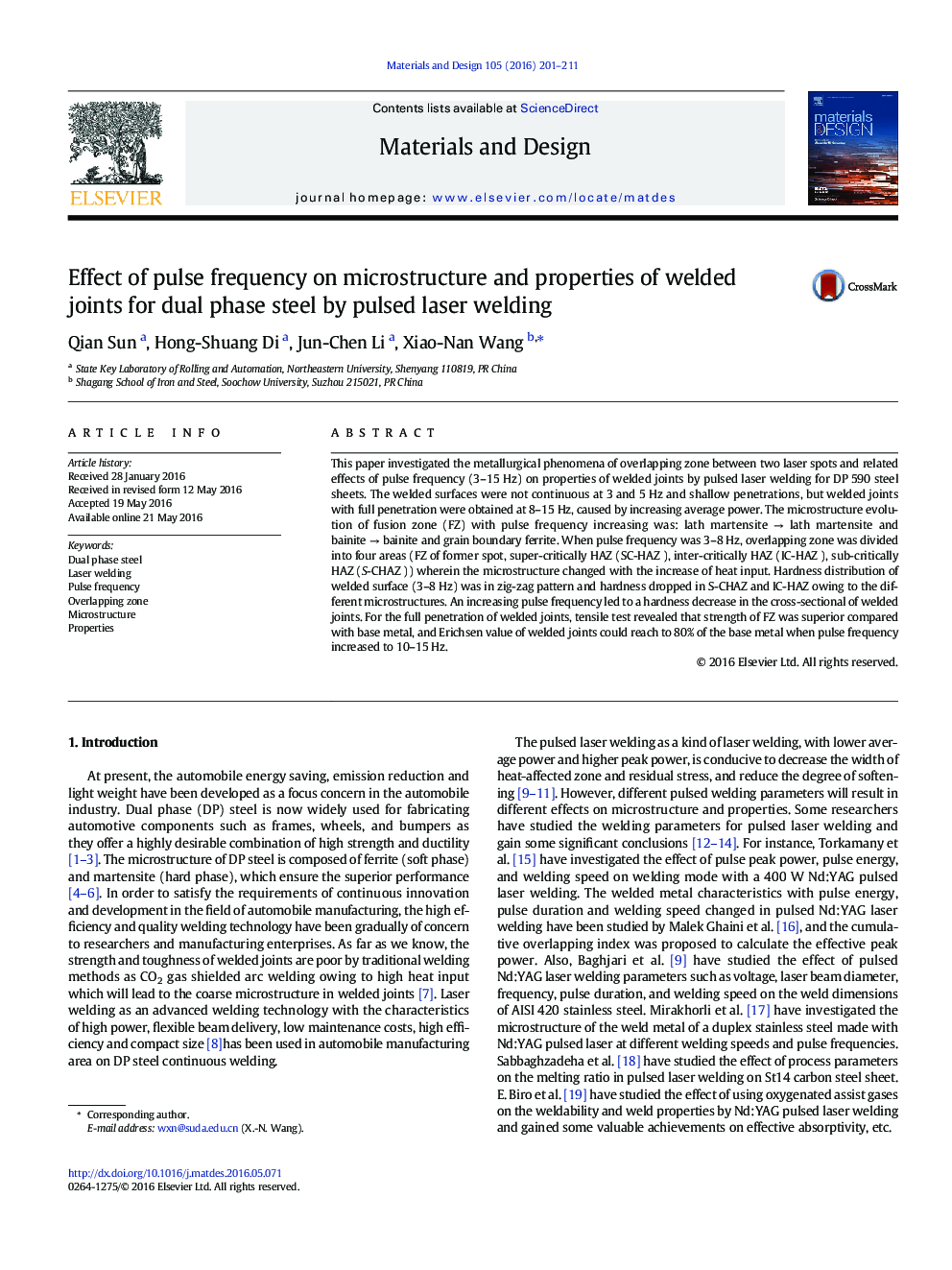| Article ID | Journal | Published Year | Pages | File Type |
|---|---|---|---|---|
| 827831 | Materials & Design | 2016 | 11 Pages |
•Penetration depth is increased with pulse frequency increases, owing to increasing of overlapping factor and average power.•With pulse frequency increases, the microstructure and locations of overlapping zone are changed and uniform gradually.•Hardness dropped in inter-critically heat affected zone and inter-critically heat affected zone of next laser spot(3-8Hz).•For full penetration welded joints, effect of pulse frequency on tensile property is no obvious but formability significant.
This paper investigated the metallurgical phenomena of overlapping zone between two laser spots and related effects of pulse frequency (3–15 Hz) on properties of welded joints by pulsed laser welding for DP 590 steel sheets. The welded surfaces were not continuous at 3 and 5 Hz and shallow penetrations, but welded joints with full penetration were obtained at 8–15 Hz, caused by increasing average power. The microstructure evolution of fusion zone (FZ) with pulse frequency increasing was: lath martensite → lath martensite and bainite → bainite and grain boundary ferrite. When pulse frequency was 3–8 Hz, overlapping zone was divided into four areas (FZ of former spot, super-critically HAZ (SC-HAZ ), inter-critically HAZ (IC-HAZ ), sub-critically HAZ (S-CHAZ )) wherein the microstructure changed with the increase of heat input. Hardness distribution of welded surface (3–8 Hz) was in zig-zag pattern and hardness dropped in S-CHAZ and IC-HAZ owing to the different microstructures. An increasing pulse frequency led to a hardness decrease in the cross-sectional of welded joints. For the full penetration of welded joints, tensile test revealed that strength of FZ was superior compared with base metal, and Erichsen value of welded joints could reach to 80% of the base metal when pulse frequency increased to 10–15 Hz.
Graphical abstractFigure optionsDownload full-size imageDownload as PowerPoint slide
